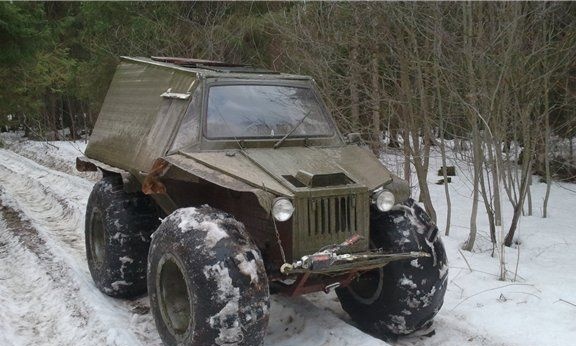
Pretty interesting all-terrain vehicle It turned out from the author, although it was originally conceived as a karakat. Now, after all the modifications, the all-terrain vehicle is equipped not only with a heated body, but also has trailer designed for two people and also heated. Actually the all-terrain vehicle was created by the author, as a machine for transporting people along the forest belt and off-road for hunting or fishing. Moreover, the all-terrain vehicle can move both on land and perfectly overcomes water barriers. a distinctive feature is that even the trailer can keep afloat well and the engine power is enough to pull it.
The mass of the all-terrain vehicle is about 650 kilograms.
A set of parts and mechanisms involved in creating this model of an all-terrain vehicle:
1) Internal combustion engine. the engine was originally installed from IZh with water cooling, after a breakdown, it was decided to put the engine from the car Oka.
2) The transmission was taken from the Niva 2121
3) The author made the frame on his own from a profile measuring 50 by 50, 40 by 40, and 20 by 20.
4) For sheathing the machine, sheet aluminum 0.5 mm thick was used.
5) The brake system of the eye.
6) Springs were taken from GAZ, Volga and Moskvich.
7) Ball springs from Niva were also used.
Let's move on to a detailed examination of the structural units and the phased assembly of the all-terrain vehicle.
The engine from IZh was installed across, from it there was a chain shaft to the gearbox, and the star on the shaft was used from the same Izh, on the star there were 20 teeth.
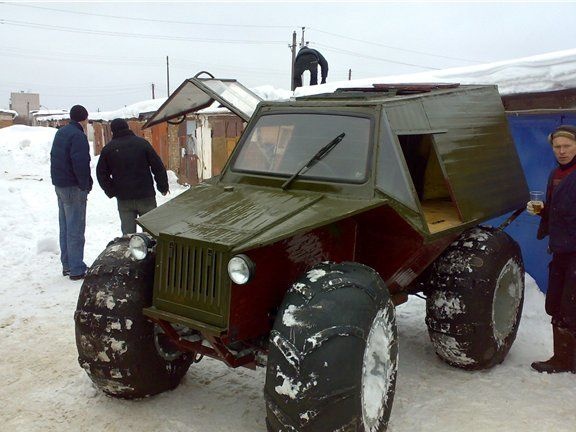
Here is a photo of the wheel already assembled (tires with Ural wheels 1200-500):
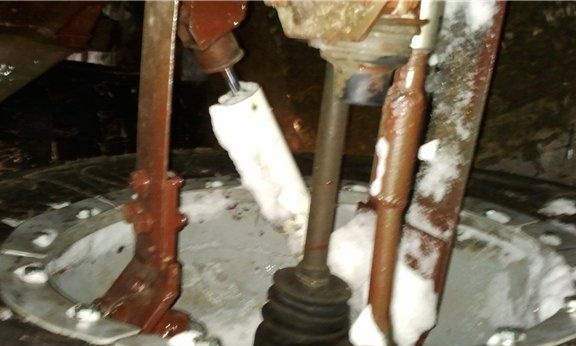
After collecting the wheels and the frame, the author engaged in the installation of the suspension, the front suspension was made according to the type of Vitaly Mazurkevich, only four springs were used across, but three. The springs were taken from the gazik radical, ball were removed from the Niva, front gas shock absorbers from the Volga.
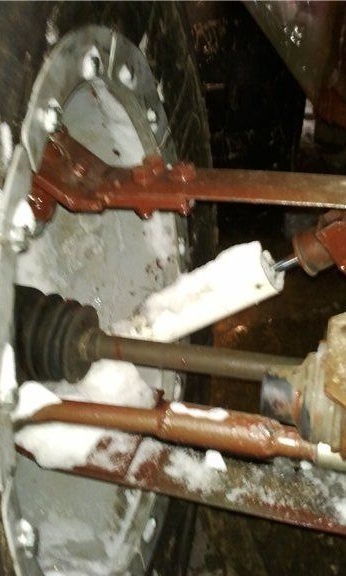
For the construction of the rear suspension, springs from a Muscovite were involved, and the jet thrust from the Niva was slightly redone, standard shock absorbers from the Volga were installed as shock absorbers for the all-terrain vehicle.
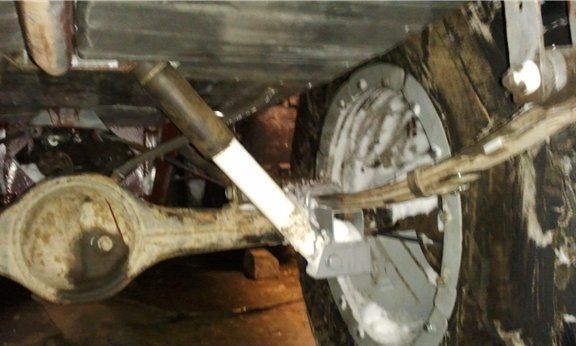
After completing work with the suspension, the author proceeded to install the main power unit of the structure, namely the internal combustion engine from the Oka:

As can be seen from the photo, steering cardans had to be made through the top of the structure, since it was simply not possible to adapt them somehow otherwise.
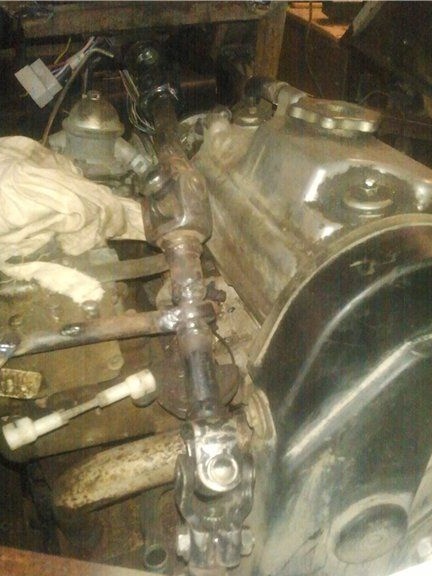
Then they started installing the brake vacuum system from the Oka, and the brakes will only be on the rear pair of wheels.
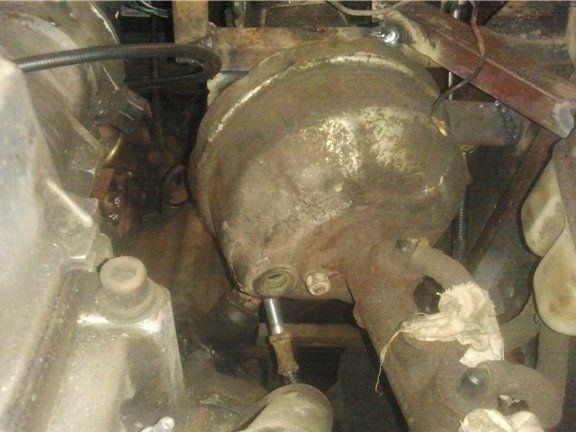
But there were no problems with the installation of the backstage, it was rather easily put into place, and its switching turned out to be quite easy and accurate.
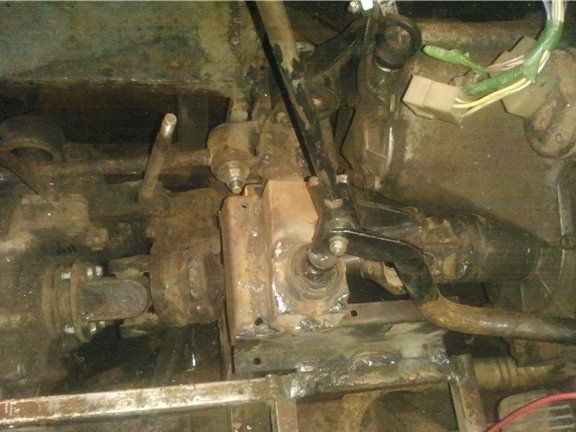
Then it was decided to put additional fasteners for the transfer case
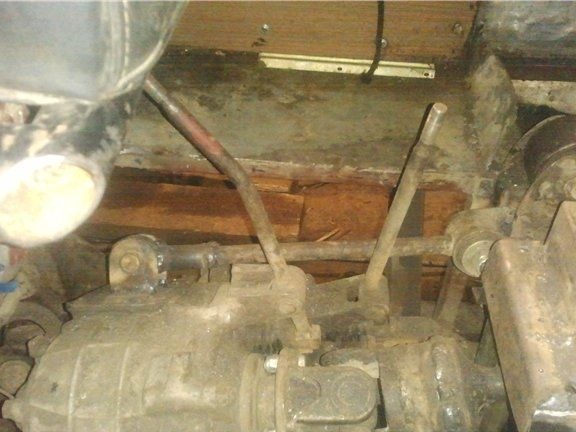
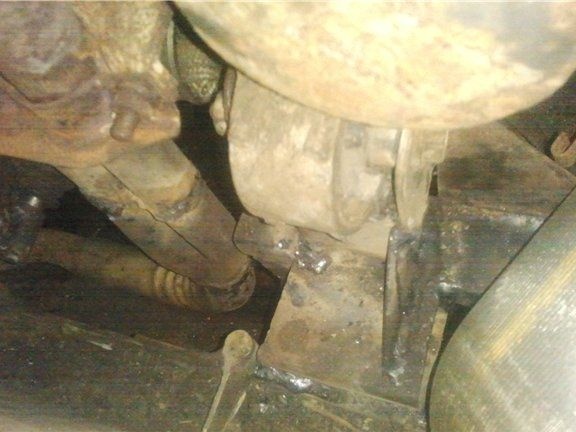
And in this photo you can see the instrument panel of the all-terrain vehicle, which was made of 3 mm thick PCB:

The next step in completing the construction of the all-terrain vehicle was to install the brake and clutch pedals:
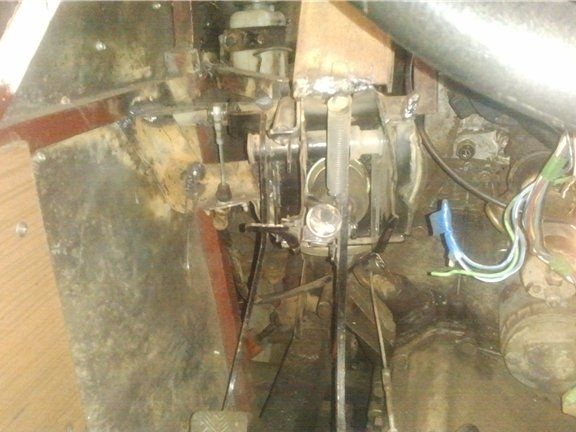
And here by the way the picture of the backstage:
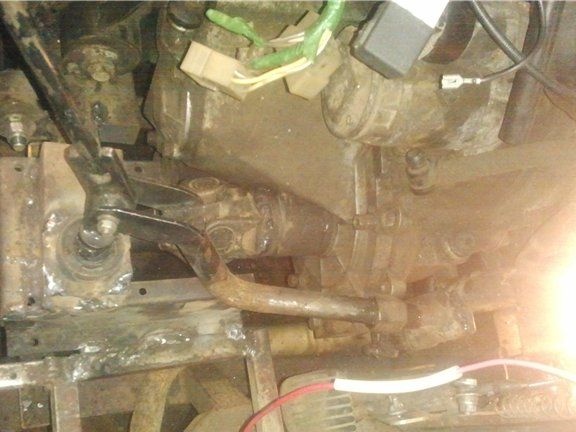
Here is a kind of construction, as if from the inside:
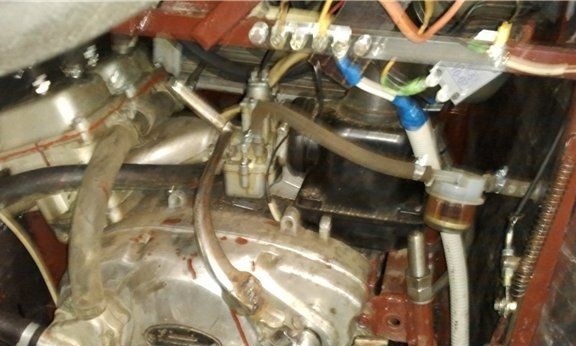
It will also be important to talk about the work in the car.
The author decided to establish two berths on both sides of the car, so that a person could stretch to full height in a prone position. All this was lined with tourist rugs. And for heating, a stove-potbelly stove was installed.
Inside the all-terrain vehicle, there is enough space for two people, there is even a small table. If someone is worried about carbon monoxide from a "potbelly stove", then there is no danger, since the design was thought out in a similar way that the firewood was laid through the top, and the gate was made on the pipe. Thanks to the installation of the gate, by the way, a small consumption of firewood was also noted, which allows you not to carry a lot of them with you and leave room for other needs.
During operation, a transmission incident occurred. Namely, during a bumpy ride, the transfer case was not blocked and for this reason the CV joint on the front end was cut off. After which the razdatka was blocked and in this way reached the garage. From this it was concluded that if the razdatka is not blocked, then there is a strong load on the transmission, so it is preferable to use a lower gear more actively.
Here is a photo of the cabin with the stove installed:
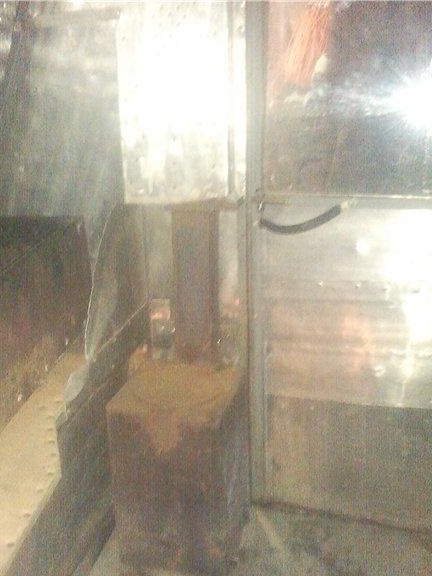
In addition, a trailer was built for karakat for two more berths, also with a stove, for cases when fishing or hunting trips with an overnight stay are carried out in 3-4 people. It was tested in practice, karakat perfectly drags the trailer both by land and by water, the trailer is immersed in the floor of the wheel.
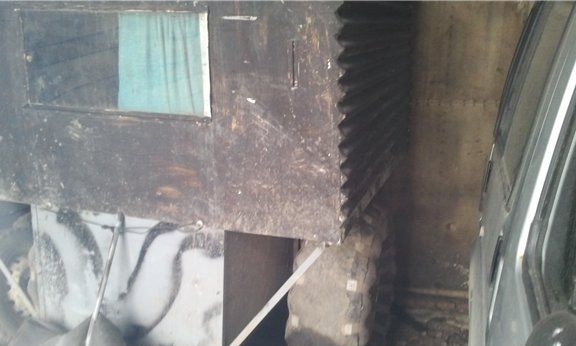
And here are photos of a fully assembled all-terrain vehicle:

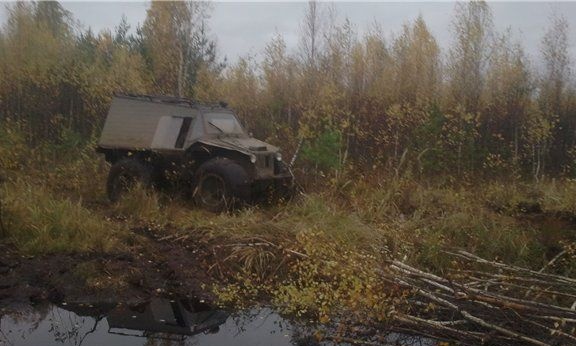
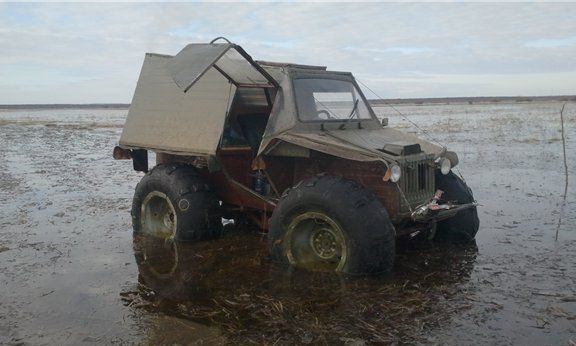
As already mentioned, the all-terrain vehicle overcomes water barriers very well and has good buoyancy.
And yet, in the process of sea trials, the following was revealed:
The front suspension still turned out to be very soft, so it was decided to add a root sheet from the Volga to the upper spring, naturally making adjustments and adjusting to the size, now everything is much better, there were three sheets from the Muscovite on the rear axle, the author added two more.
The engine copes with the load perfectly withstands 5 people + trailer.
View from the right side
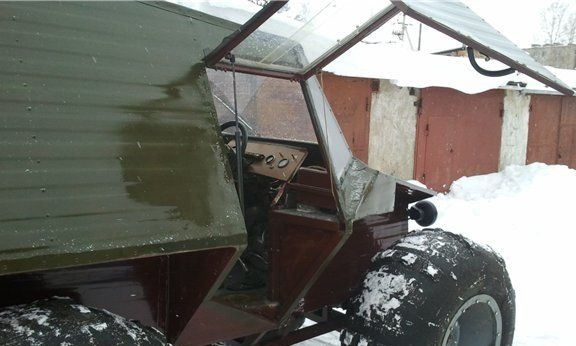
The author of the all-terrain vehicle: "alekcandep.brat" Alexander from the city of Vologda.
